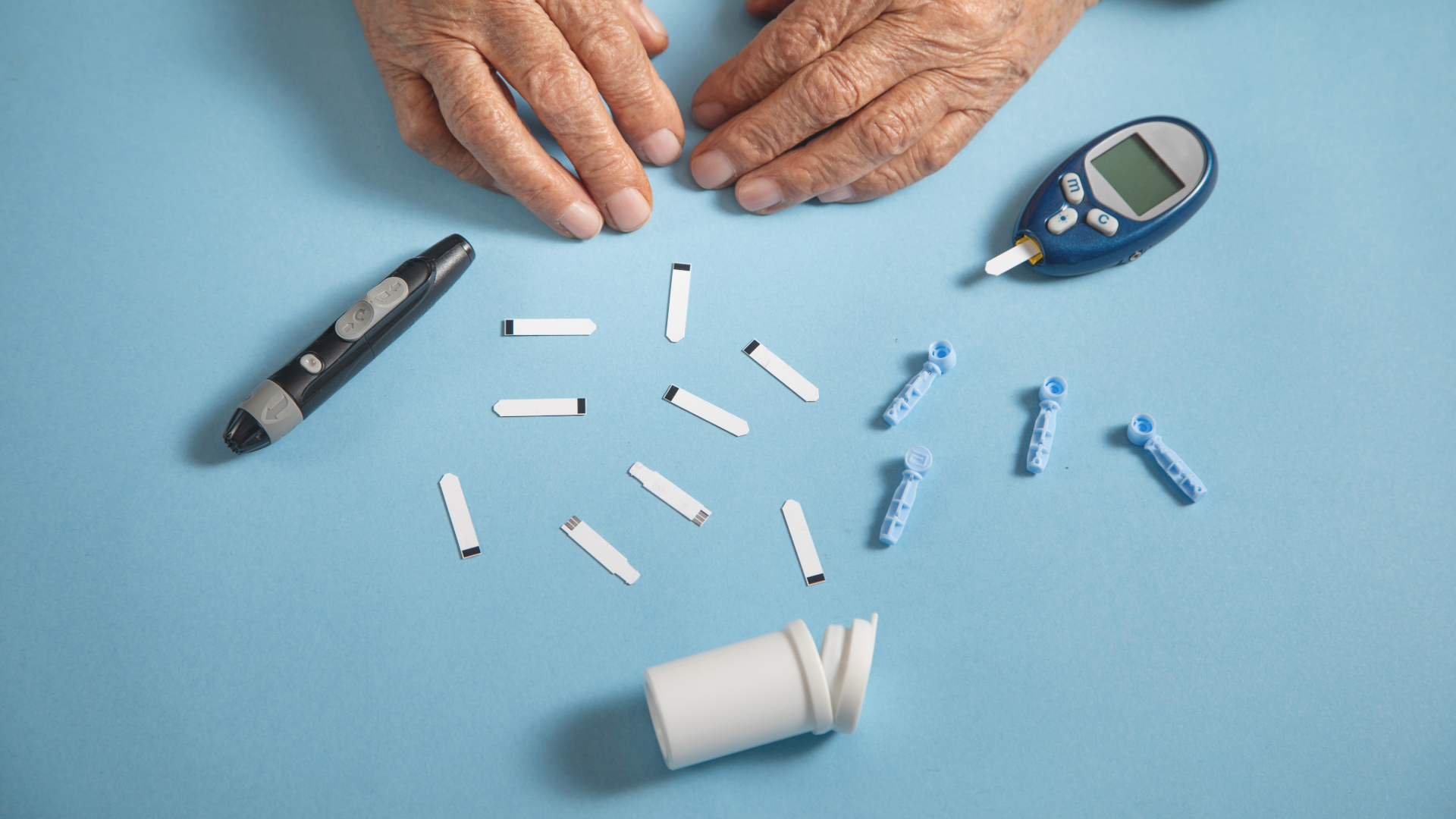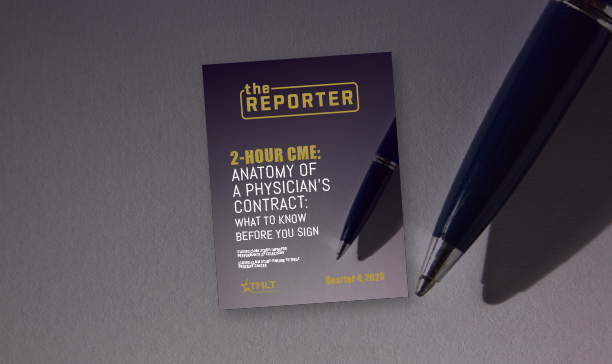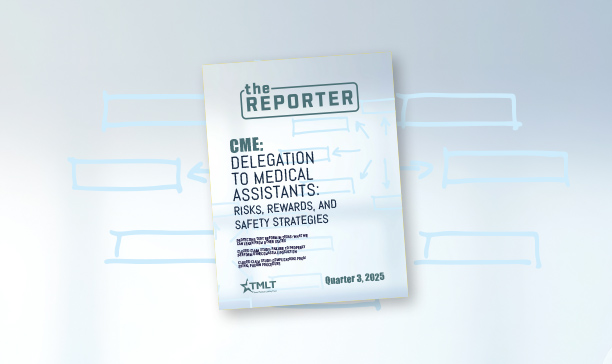Inappropriate treatment of infected prosthetic
In 1999, a 51-year-old woman was brought to a hospital for left hip replacement surgery. Revision hip surgeries were performed in 2004, 2008, and 2012.
Presentation and physician action
In 1999, a 51-year-old woman was brought to a hospital for left hip replacement surgery. The surgery was to repair injuries sustained in an accident. A revision hip surgery was performed in 2004. The patient began seeing Orthopedic Surgeon A, who performed repeat revision surgeries in 2008 and 2012.
The following year, the patient developed a hip infection and abscess. Orthopedic Surgeon A irrigated and debrided the hip. The patient recovered but another hip infection developed. Orthopedic Surgeon A prescribed suppressive antibiotics and told the patient that antibiotics would only help control the infections for a limited time and would not provide definitive treatment.
On June 2, 2016, a hip X-ray showed “good prosthetic alignment amidst radiolucencies around the femoral shaft and cup.” The radiolucencies indicated reduced bone density. Orthopedic Surgeon A noted that the X-ray findings suggested chronic infection or implant loosening. He recommended that the hip replacement component be removed, the infection cleared out, and the hip component replaced.
The patient rejected this plan, as she did not want to undergo another complex, painful procedure with a long recovery.
As an alternative, Orthopedic Surgeon A suggested a hip wash-out. Again, he advised the patient that this would be a short-term solution to control the infection but would not eliminate it. As explained to the patient, the procedure would include incision and drainage (I&D), placement of antibiotic beads, and four weeks of intravenous antibiotics.
The patient chose to have the hip wash-out procedure.
Orthopedic Surgeon A took the patient to surgery on June 21, 2016. Immediately after the procedure, the patient reported numbness and lack of mobility in her left leg. Orthopedic Surgeon A diagnosed neuropraxia of the left foot that was expected to resolve itself in a few days. He noted that the neuropraxia was likely caused by a “stretch injury, contusion of the nerve, or infiltration of local anesthetic.”
After several weeks without a change in her condition, the patient went to a physical medicine and rehabilitation (PMR) physician. The PMR physician advised that the patient had an injury to the common sciatic nerve. The patient attended physical therapy and saw some progress. However, she reported pain and numbness throughout her left leg and no change in her left foot neuropraxia.
In January 2018, the patient went to Orthopedic Surgeon B who ordered an electromyogram of the sciatic nerve. Orthopedic Surgeon B determined that the patient still had an infection and recommended a left hip resection with an antibiotic hip spacer placed between the prosthesis and the hip. The patient agreed to this surgery and the procedure was completed in October 2018.
Allegations
The patient filed a lawsuit against Orthopedic Surgeon A alleging failure to remove the hip prosthesis, treat and eliminate the infection, and proceed with another version of the total left hip replacement in 2016.
The patient also claimed that Orthopedic Surgeon A’s inability to effectively treat the infection resulted in a chronic condition that deteriorated the bones in his left hip. It was further alleged that Orthopedic Surgeon A followed an inappropriate course of treatment in 2016 that resulted in injury to the patient’s sciatic nerve causing numbness, pain, and the inability to walk.
Legal implications
Consultants for the plaintiff believed that Orthopedic Surgeon A failed to treat the patient’s infection appropriately in 2016. Instead of the wash-out procedure, the patient’s late-stage infection (four years after the third revision arthroplasty) required removal of all prosthetic components; washing out the joint; placement of a hip antibiotic spacer; and waiting six weeks to ensure the infection was eradicated before implanting a new left hip prosthesis.
According to these consultants, the late-stage, wash-out treatment was ineffective to fully eradicate the infection. A wash-out procedure would have only been appropriate in an early post-surgical infection. Re-infection and further injury were considered a strong possibility for this patient due to the delay in appropriate treatment. One consultant put the chances of reinfection for this patient, even with hip component revision and infection treatment, at 20 to 25 percent due to how long the infection had been present.
A consultant for the plaintiff testified that the patient signed a consent form that did not mention nerve damage as a potential risk of the 2016 procedure. This risk was also not documented as part of the informed consent conversation. Therefore, the plaintiff’s consultant felt informed consent may have been inadequate.
Consultants for the defense were also critical. While they stated that it was unclear from the operative report how the sciatic nerve injury occurred, they felt it happened during the 2016 procedure. They also believed it was the responsibility of Orthopedic Surgeon A to more strongly direct the patient to the appropriate treatment and that allowing the patient to dictate inappropriate care was “not acceptable”.
Disposition
The case was settled on behalf of Orthopedic Surgeon A.
About improper performance
Risk management for orthopedic surgeons
Disclaimer
Presentation and physician action
In 1999, a 51-year-old woman was brought to a hospital for left hip replacement surgery. The surgery was to repair injuries sustained in an accident. A revision hip surgery was performed in 2004. The patient began seeing Orthopedic Surgeon A, who performed repeat revision surgeries in 2008 and 2012.
The following year, the patient developed a hip infection and abscess. Orthopedic Surgeon A irrigated and debrided the hip. The patient recovered but another hip infection developed. Orthopedic Surgeon A prescribed suppressive antibiotics and told the patient that antibiotics would only help control the infections for a limited time and would not provide definitive treatment.
On June 2, 2016, a hip X-ray showed “good prosthetic alignment amidst radiolucencies around the femoral shaft and cup.” The radiolucencies indicated reduced bone density. Orthopedic Surgeon A noted that the X-ray findings suggested chronic infection or implant loosening. He recommended that the hip replacement component be removed, the infection cleared out, and the hip component replaced.
The patient rejected this plan, as she did not want to undergo another complex, painful procedure with a long recovery.
As an alternative, Orthopedic Surgeon A suggested a hip wash-out. Again, he advised the patient that this would be a short-term solution to control the infection but would not eliminate it. As explained to the patient, the procedure would include incision and drainage (I&D), placement of antibiotic beads, and four weeks of intravenous antibiotics.
The patient chose to have the hip wash-out procedure.
Orthopedic Surgeon A took the patient to surgery on June 21, 2016. Immediately after the procedure, the patient reported numbness and lack of mobility in her left leg. Orthopedic Surgeon A diagnosed neuropraxia of the left foot that was expected to resolve itself in a few days. He noted that the neuropraxia was likely caused by a “stretch injury, contusion of the nerve, or infiltration of local anesthetic.”
After several weeks without a change in her condition, the patient went to a physical medicine and rehabilitation (PMR) physician. The PMR physician advised that the patient had an injury to the common sciatic nerve. The patient attended physical therapy and saw some progress. However, she reported pain and numbness throughout her left leg and no change in her left foot neuropraxia.
In January 2018, the patient went to Orthopedic Surgeon B who ordered an electromyogram of the sciatic nerve. Orthopedic Surgeon B determined that the patient still had an infection and recommended a left hip resection with an antibiotic hip spacer placed between the prosthesis and the hip. The patient agreed to this surgery and the procedure was completed in October 2018.
Allegations
The patient filed a lawsuit against Orthopedic Surgeon A alleging failure to remove the hip prosthesis, treat and eliminate the infection, and proceed with another version of the total left hip replacement in 2016.
The patient also claimed that Orthopedic Surgeon A’s inability to effectively treat the infection resulted in a chronic condition that deteriorated the bones in his left hip. It was further alleged that Orthopedic Surgeon A followed an inappropriate course of treatment in 2016 that resulted in injury to the patient’s sciatic nerve causing numbness, pain, and the inability to walk.
Legal implications
Consultants for the plaintiff believed that Orthopedic Surgeon A failed to treat the patient’s infection appropriately in 2016. Instead of the wash-out procedure, the patient’s late-stage infection (four years after the third revision arthroplasty) required removal of all prosthetic components; washing out the joint; placement of a hip antibiotic spacer; and waiting six weeks to ensure the infection was eradicated before implanting a new left hip prosthesis.
According to these consultants, the late-stage, wash-out treatment was ineffective to fully eradicate the infection. A wash-out procedure would have only been appropriate in an early post-surgical infection. Re-infection and further injury were considered a strong possibility for this patient due to the delay in appropriate treatment. One consultant put the chances of reinfection for this patient, even with hip component revision and infection treatment, at 20 to 25 percent due to how long the infection had been present.
A consultant for the plaintiff testified that the patient signed a consent form that did not mention nerve damage as a potential risk of the 2016 procedure. This risk was also not documented as part of the informed consent conversation. Therefore, the plaintiff’s consultant felt informed consent may have been inadequate.
Consultants for the defense were also critical. While they stated that it was unclear from the operative report how the sciatic nerve injury occurred, they felt it happened during the 2016 procedure. They also believed it was the responsibility of Orthopedic Surgeon A to more strongly direct the patient to the appropriate treatment and that allowing the patient to dictate inappropriate care was “not acceptable”.
Disposition
The case was settled on behalf of Orthopedic Surgeon A.
About improper performance
Risk management for orthopedic surgeons
Disclaimer
Want to save this article for later?
Download the full issue as a PDF for future reference or to share with colleagues.
Subscribe to Case Closed to receive insights from resolved cases.
You’ll receive two closed claim studies every month. These closed claim studies are provided to help physicians improve patient safety and reduce potential liability risks that may arise when treating patients.
Related Resources
Discover more insights, stories, and resources to keep you informed and inspired.






